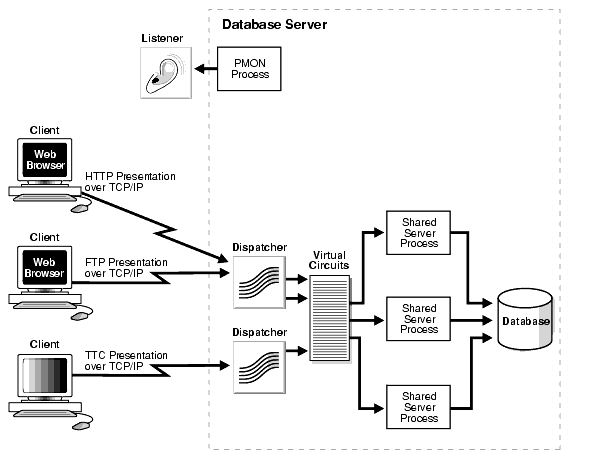-
User guide
- Part 1 - Introduction
- Part 2 - Core Restlet
- Part 3 - Restlet Editions
- Part 4 - Restlet Extensions
- Appendices
- Tutorials
- Javadocs
- Change Log
Oracle XDB Restlet Adapter - Architecture - Introduction
Oracle XDB Restlet adapter is a Server connector for Restlet Framework it provides to Oracle 11g the availability to support server side REST Web Services (WS).
For doing that we use the Oracle JVM, an embedded JVM compatible with JDK 1.5 running inside the database, it means using same memory space and local access to the SQL resources.
Additional to this Oracle XMLDB provides a Servlet 2.2 compatible stack to implement server side Servlets.
These components work together to run Restlet Framework and to receive HTTP request using the embedded listener.
Oracle also provides a native SOAP support for running native Web Services, but many people think that REST support brings to Oracle other features:
- Simplicity, from developer’s perspective REST WS are quite straightforward.
- Leverage of all HTTP features for caching, you can use Apache mod_cache or better than this Oracle Web Cache and ESI invalidation protocol to speed up your WS. Also the HTTP’s 304 return code.
- Less network traffic, a simple SOAP service requires 675 bytes at POST request and 306 bytes at response, similar REST WS only requires 79 bytes at GET request and 28 bytes at response. If you have a site with million of hits these differences are a lot wasted resources.
** Architecture
Following picture depicts Oracle XDB Restlet adapter and Oracle components.

Note that Oracle SQLNet is accepting either connection using TTC presentation protocol (traditional Client/Server architecture) and HTTP/FTP Presentation protocol.
The application stack is depicted in the following picture:

